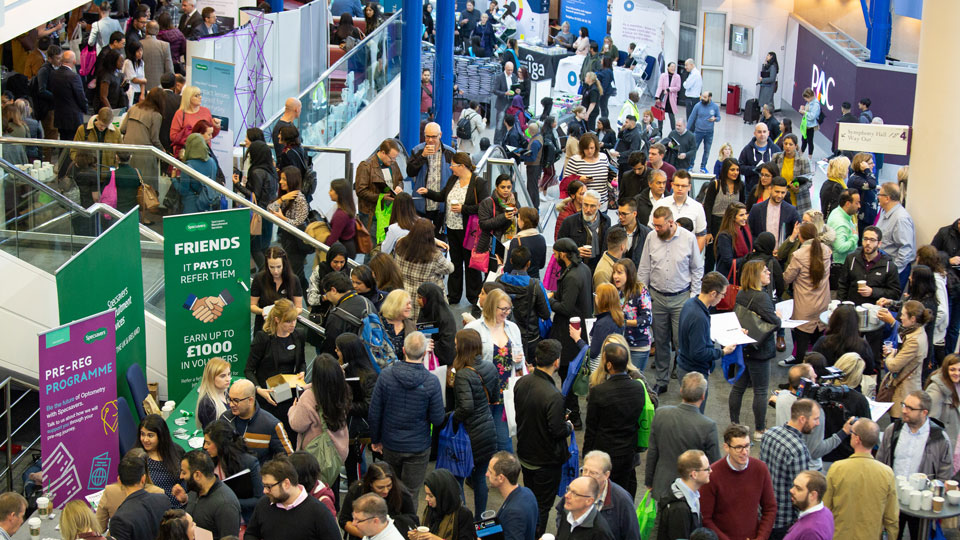- OT
- Life in practice
- Practitioner stories
- A PACed conference for all
Key milestones
A PACed conference for all
Optometrist and Specsavers partner, Rakesh Kapoor, reflects on the multiple’s PAC conference, which he has attended every year since it was established 25 years ago

Rakesh Kapoor
19 September 2019
01 I attended the very first Specsavers Professional Advancement Conference (PAC) when it was first established in 1995 and have gone to every conference since.
At the time of the first-ever PAC, I was new to Specsavers, having joined in 1994. The conference was something new, exciting and different. Up until then, practitioners would get most of their informal education through reading journals, and while the odd hospital ophthalmologist might invite you to a local professional development talk, that was few and far between. The concept of PAC was completely new and innovative. When a university friend, who was also working at Specsavers, asked if I was attending, I signed up on the spot. It was billed as being for the everyday practitioner and it stood up to that claim.
The conference has developed with the times and ticks all of the education boxes, while also offering choice
02 The conference has evolved immensely over the years and is ever-changing to meet the needs of the practitioner in High Street practice.
In the beginning it was all lectures, you used to park yourself on a seat and just listen. Everyone attended the same lectures. Over the years, Specsavers introduced different education tracks to the conference so that practitioners had choice and could learn more about areas that were of specific interest to them. Workshops were later introduced that enabled practitioners to take part in practical sessions on clinical skills such as volk lens. This has since been extended to equipment with the increased use of optical coherence tomography devices, for example.
Today the conference is heavily geared towards peer discussion workshops. At times there are around 150 practitioners in a room sitting at tables of 10 talking to their peers about clinical scenarios in practice and learning from each other – it is really powerful. The conference has developed with the times and ticks all of the education boxes, while also offering choice.
03 It’s phenomenal how much the event has grown. From 1995 when there were a couple of hundred people in one room, to thousands of professionals and different education tracks.
In our profession, you can become detached, but PAC is a really good opportunity to speak to and network with peers from multidisciplinary backgrounds.
I have met many international delegates at PAC over the years and been able to speak to them about what it’s like practising across Europe. It’s beneficial to hear their perspective of what is going on in the world of optometry.
In 2011, Specsavers introduced education tracks for audiologists so that the event better represented its business and has since opened it up to non-Specsavers employees too.

Most recently, MiniPAC has been established to make the event even more accessible to practitioners. PAC has always been held on a Sunday, which can now be a busy trading day on the High Street. Hosting MiniPACs in regions across the UK hopefully enables everybody on a clinical team to have the opportunity to access and attend a PAC event at least once a year.
04 My favourite year of PAC to date was 2015.
The conference had secured contact lens expert, Professor Nathan Efron, as its keynote speaker who gave a talk about rethinking contact lens aftercare. It was a milestone lecture for me as someone with a passion for contact lenses. Professor Efron stood on stage and challenged the College of Optometrists’ peer view on contact lens aftercare intervals. As practitioners, we knew that the current view was outdated and was based on contact lenses that were popular in the 90s and that teaching had moved on. However, to have our view affirmed by a world-renowned international expert who tackled the topic on stage was amazing to watch and learn from.
It’s phenomenal how much the event has grown. From 1995 when there were a couple of hundred people in one room, to thousands of professionals and different education tracks
05 I would encourage all optometrists to consider attending PAC. While it is invaluable for the CET alone, as the years have gone by the content that is delivered at PAC has become more and more relevant to what is happening in practice today.
25 years ago, there wasn’t an event like it, it was a novel way of learning and that was the main ingredient to its success and is what made it stand out. It has remained relevant in the content that it covers, relevant to how teaching is shared, and the networking opportunities are aplenty. The story of PAC is the story of optical education in the last 25 years.
- As told to Emily McCormick.
Advertisement

Comments (0)
You must be logged in to join the discussion. Log in